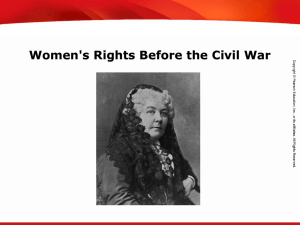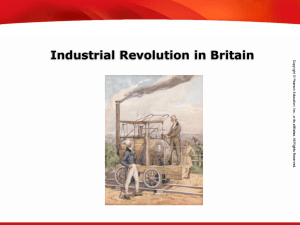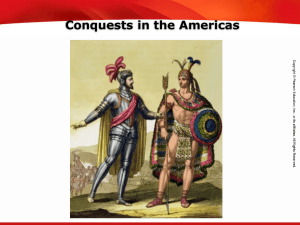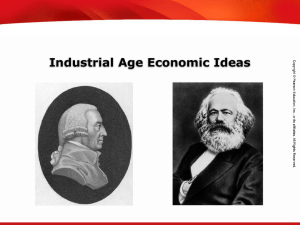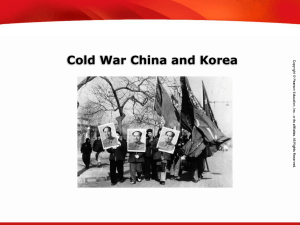9.1 PPT
advertisement
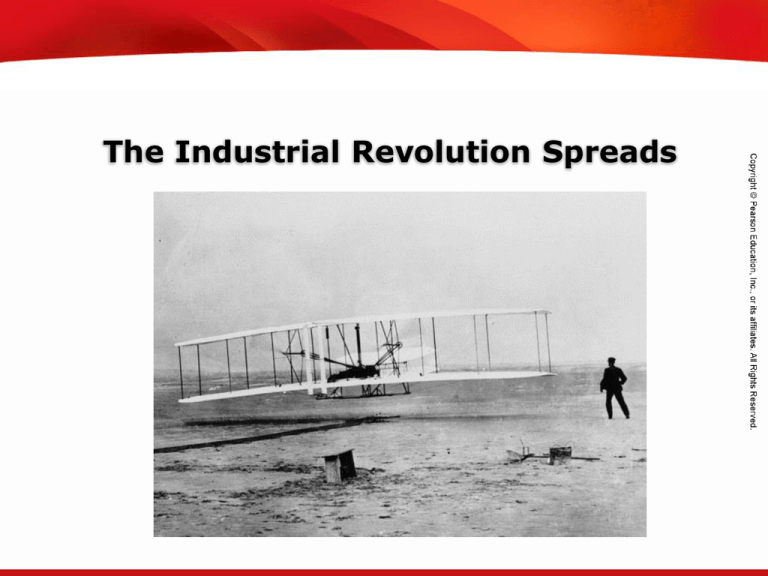
TEKS 8C: Calculate percent composition and empirical and molecular formulas. The Industrial Revolution Spreads TEKS 8C: Calculate percent composition and empirical and molecular formulas. Objectives • List the industrial powers that emerged in the 1800s. • Describe the impact of new technology on industry, transportation, and communication. • Understand how big business emerged in the late 1800s. TEKS 8C: Calculate percent composition and empirical and molecular formulas. Terms and People • Henry Bessemer – a British engineer who developed a new process for making steel from iron in 1856 • Alfred Nobel – a Swedish chemist who invented dynamite in 1866 • Michael Faraday – an English chemist who created the first electric motor in the 1800s • dynamo – a machine that is used to generate electricity TEKS 8C: Calculate percent composition and empirical and molecular formulas. Terms and People (continued) • Thomas Edison – the American inventor who made the first electric light bulb in the 1870s • interchangeable parts – identical components that could be used in place of one another in manufacturing • assembly line – production method that breaks down a complex job into a series of smaller tasks • Orville and Wilbur Wright – American bicycle makers who designed and flew an airplane in 1903, ushering in the air age TEKS 8C: Calculate percent composition and empirical and molecular formulas. Terms and People (continued) • Guglielmo Marconi – an Italian inventor who developed the radio in the 1890s • stock – shares of a company • corporation – business owned by many investors who buy shares of stock and risk only the amount of their investment • cartel – a group of companies that join together to control the production and price of a product TEKS 8C: Calculate percent composition and empirical and molecular formulas. How did science, technology, and big business promote industrial growth? The Industrial Revolution entered a second phase by the mid-1800s. New industrial powers and products emerged. Giant companies arose due to changes in business organization. This second phase transformed Western economies. TEKS 8C: Calculate percent composition and empirical and molecular formulas. Great Britain had been the first nation to industrialize. It tried to protect this head start by making rules against exporting inventions. Nevertheless, a British mechanic opened factories in Belgium in 1807, making that country the second to industrialize. By the mid 1800s, other nations in Europe—as well as the United States—joined Britain in the race to industrialize. TEKS 8C: Calculate percent composition and empirical and molecular formulas. Germany, France, and the United States caught up to Britain quickly. They benefited from abundant supplies of natural resources. Europe and the United States also borrowed British technology. Following its unification in 1871, Germany became Europe’s leading industrial power. The United States also advanced rapidly after the Civil War. TEKS 8C: Calculate percent composition and empirical and molecular formulas. Centers of industry were scattered across Europe and the United States by 1871. TEKS 8C: Calculate percent composition and empirical and molecular formulas. The world industrialized unevenly. • The nations of eastern and southern Europe industrialized slowly. They lacked natural resources, capital, or ideal political conditions. • However, Japan, Canada, Australia, and New Zealand all industrialized during the late 1800s and built thriving economies. TEKS 8C: Calculate percent composition and empirical and molecular formulas. The effects of industrialization were both positive and negative. • People worked very long hours in dangerous factories. • But new goods became widely available at low prices. Patterns of world trade changed. Western powers grew to dominate the world. TEKS 8C: Calculate percent composition and empirical and molecular formulas. Henry Bessemer patented a new process for making steel in 1856. Because steel was so cheap and strong, it became the main material used to make tools, bridges, and railroads. Thanks to the Bessemer Process, steel production soared in the late 1800s. TEKS 8C: Calculate percent composition and empirical and molecular formulas. Innovations in chemistry and electricity changed how industry operated in the late 1800s. Inventor Major invention Year Alfred Nobel Dynamite 1866 Michael Faraday First simple electric Late motor and the 1800s dynamo Thomas Edison Electric light bulb 1870s TEKS 8C: Calculate percent composition and empirical and molecular formulas. New methods of production improved efficiency in factories. • Making products with interchangeable parts simplified both manufacture and repair. • Workers on an assembly line added these parts to the product as it moved along a belt through the factory. Because goods could be produced more quickly and cheaply, prices decreased, and more people became consumers. TEKS 8C: Calculate percent composition and empirical and molecular formulas. The transportation revolution that began with the first railroads continued. • Transcontinental railroads linked cities together. • Automakers such as Nikolaus Otto, Karl Benz, and Gottlieb Daimler changed the way people traveled by using gasoline to power internal combustion engines. • Henry Ford used the assembly line to mass-produce cars and make them affordable. TEKS 8C: Calculate percent composition and empirical and molecular formulas. The internal combustion engine also made sustained flight possible. Orville and Wilbur Wright flew the first airplane at Kitty Hawk, North Carolina, in 1903. TEKS 8C: Calculate percent composition and empirical and molecular formulas. The revolution in communication made the world seem smaller. Inventor Major invention Year Samuel Morse Telegraph 1844 Alexander Graham Bell Telephone 1876 Guglielmo Marconi Radio Late 1890s TEKS 8C: Calculate percent composition and empirical and molecular formulas. Big business began to dominate industry in the late 1800s. • Company owners sold stock to investors to get the capital needed to invest in new technology. • Companies became corporations, businesses owned by many stockholders. • Some business leaders created monopolies and cartels to control entire industries. TEKS 8C: Calculate percent composition and empirical and molecular formulas. The rise of monopolies sparked a fierce debate. • Supporters said that monopolies made business more efficient and added to prosperity. • Reformers said that monopolies unfairly interfered with free competition. They sought laws to break up monopolies and regulate corporations.


